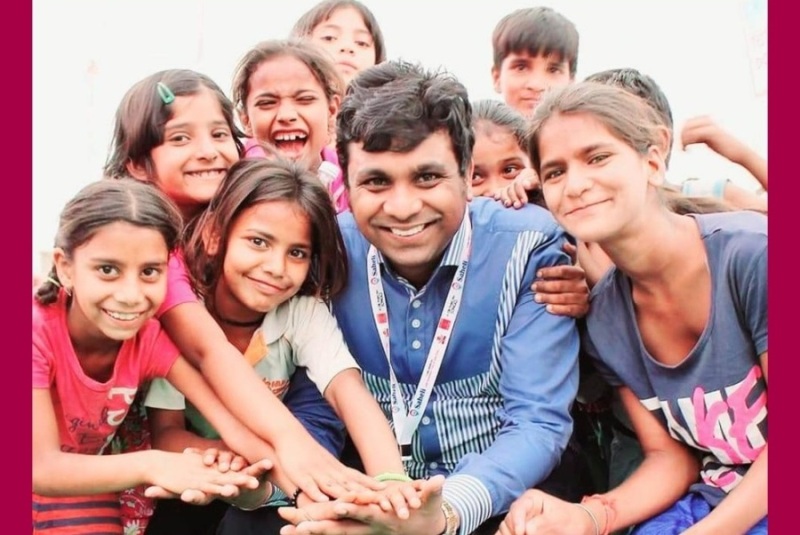As India celebrates National Education Day on November 11, it’s an ideal moment to recognize initiatives that are reshaping the nation’s education landscape. Room to Read India, a prominent non-profit dedicated to advancing literacy and gender equality in education, has been making a profound impact through its flagship India Gets Reading campaign. Launched in 2019, this transformative program aims to instill a love for reading among young learners, particularly in underserved communities.
In an inspiring interview with TheCSRUniverse, Ms. Poornima Garg, Country Director, Room to Read India, offers insights into the evolution of the campaign, which has grown significantly since its inception. This year, the campaign saw a 300% increase in participation, reaching over 3 million children across 10 key states. She further discusses the innovative strategies that have enabled the campaign’s success, such as the Read-a-thon and the collaboration with state governments and like-minded organizations to amplify its reach.
Reflecting on the importance of early learning, Ms. Garg shares valuable perspectives on policy changes and recommendations to overcome challenges in India’s education system. She emphasizes the need to strengthen foundational literacy, particularly in the primary grades, ensuring a brighter future for India’s children.
Scroll down to read the full interview.
Q&A
Q. What inspired the India Gets Reading campaign, and how has it evolved over six editions? How has the partnership with USAID enhanced Room to Read India's efforts?
A. The India Gets Reading campaign was inspired by Room to Read India’s commitment to advancing national literacy goals, particularly in alignment with the NIPUN Bharat Mission and the National Education Policy 2020. Launched in 2019, the campaign aims to cultivate a love for reading among children and communities, recognizing early literacy as the foundation for long-term educational success. Over six editions, the campaign has evolved to address emerging literacy challenges through thematic focuses. While last year’s campaign focussed on “Teachers as Changemakers” this year’s campaign theme focused on “Making Room for Early Learning.”
USAID has been a long-standing partner of Room to Read. Our association is a decade old. Through our collaboration to support and strengthen the foundational literacy initiatives across India, we have significantly amplified our reach and positive influence to extend literacy initiatives to millions of children. This collaboration has supported innovative approaches like the Read-a-thon and the development of age-appropriate reading materials, develop a love for reading in children, contributing to a nationwide reading culture.
Q. Can you share key milestones and successes from the 2024 campaign?
A. The 2024 campaign, themed "Making Room for Early Readers," was a remarkable success. It began on August 15 and culminated on International Literacy Day, September 8. The Read-a-thon saw unprecedented participation, with a 300% increase in engagement compared to previous years, where we were able to engage more than 3 million participants across our 10 intervention states. Room to Read India once again made it to the Asia Book of Records for “maximum participation reading together simultaneously across multiple locations during the same time span”. The campaign also evolved significantly thing year in terms of participation and ownership by stakeholders. To share a couple of examples – In Rajasthan, the Department of Education led the statewide reading campaign, Prakhar Rajasthan, significantly expanding its reach in schools across the state. The involvement of Honourable Education Minister, Government of Rajasthan was a big boost to the initiative.
Similarly, in Jharkhand, a successful collaboration with the Government of Jharkhand, UNICEF and India Partnership for Early Learning led to a huge reach in the statewide reading campaign.
Q. How has the campaign impacted early literacy across India, particularly in the 10 focus states?
A. The India Gets Reading campaign has played a transformative role in improving early literacy across 10 key states—Chhattisgarh, Delhi NCR, Jharkhand, Karnataka, Madhya Pradesh, Maharashtra, Rajasthan, Telangana, Uttarakhand, and Uttar Pradesh. By providing children with age-appropriate reading materials and fostering community involvement, the campaign has improved language development and learning outcomes. An example to substantiate this is our partnerships with the Madhya Pradesh state government, where we collaborated to developed storybooks and reading cards that were disseminated in 80,000 schools in the state, reaching more than five million children. Similar initiatives across other states have significantly contributed to promoting a reading culture across different regions.
Q. What strategies contributed to reaching over 1,35,000 schools and over 3 million children through the campaign?
A. Our strategies focused on scalable approaches, including collaboration with state governments to distribute reading materials and co-develop age-appropriate literature. Initiatives like the Read-a-thon engaged communities and schools, encouraging a hands-on approach to literacy. Additionally, Room to Read India has been working closely with teachers, providing capacity-building training to ensure effective classroom instruction.
Community engagement was also vital, as we involved families and local leaders to extend learning beyond the classrooms and school.
Q. What role have state governments and like-minded organizations played in the campaign's success?
A. State governments have been invaluable partners in the India Gets Reading campaign, enabling the distribution of reading materials in schools and co-developing resources tailored to local needs. Our partnerships with like-minded organizations have further amplified our efforts by providing additional resources, expertise, and on-the-ground support. These collaborations have ensured the campaign’s scalability and sustainability, allowing us to make a lasting impact on literacy across diverse regions.
Q. How does Room to Read India define "quality learning environments," and why are they crucial for early literacy?
A. A quality learning environment is one that nurtures a child’s holistic development by providing access to engaging, age-appropriate reading materials, skilled teachers, and a supportive community. Such environments are safe, inclusive, and gender-responsive, ensuring that all children can thrive. They foster meaningful connections between teachers, parents, and peers, which are crucial for a child’s emotional and cognitive development. Room to Read India believes that creating these environments is essential for building strong literacy foundations, which are key to lifelong learning.
Q. What initiatives has Room to Read India undertaken to promote reading culture in families and communities?
A. Room to Read India has launched several initiatives to promote a reading culture beyond schools. Pledge Reading Time is one of our key activities, encouraging families to dedicate time to reading with children. Read-a-thon is a reading marathon where all participants ‘drop everything and read’ for a particular time frame. We also organize community events to raise awareness about the importance of literacy and provide parents with tools to support their child’s learning at home. By fostering community involvement, we create a holistic ecosystem where learning is valued and nurtured both at school and home.
Q. What are the next steps for Room to Read India in advancing early literacy and education outcomes?
A. By 2027, with an increased focus on system-strengthening and adoption of Room to Read’s core competencies, we will reach over 50% children & educators enrolled & teaching respectively in primary government schools in India, by facilitating in bridging the gap between policy to practice.
By 2027, we aim to address issues of gender equality through life skills education by increased focus on working with educators & all adolescents with particular focus on girls. We will further work on government/system adoption of our life skills curriculum in the states where we work in line with National Education policy.
Over the three years, Room to Read will aim to implement these objectives in line with the National Education Policy 2020, NIPUN Mission, 21st Century skills recommendations and with a specific
focus on addressing the policy to practice gap with 5E approach (Expand, Evolve, Evidence, Engagement & Experiment) to education delivery.
Q. Can you elaborate on the importance of early learning in addressing development challenge?
A. Early learning lays the foundation for a child’s cognitive, social, and emotional development, directly influencing their long-term success in life. By investing in early literacy, we address critical development challenges such as low school retention rates, gender disparities, and economic inequality. Strengthening early literacy not only improves educational outcomes but also empowers children with the skills and confidence needed to contribute positively to society. It is a key driver in breaking the generational cycle of poverty and ensuring inclusive development.
Q. What policy changes or recommendations would you suggest to support early literacy initiatives in India?
A. Prioritizing the implementation of the National Education Policy (NEP) at the local level is crucial for strengthening early literacy programs. Policymakers should focus on increasing resources for teacher training, ensuring that educators are equipped to handle diverse classroom needs. Additionally, expanding access to quality reading materials, particularly in regional languages, is crucial. Greater collaboration between government bodies, NGOs, and communities can also help create a more cohesive ecosystem that supports early learning and addresses literacy gaps effectively.















.jpg)




